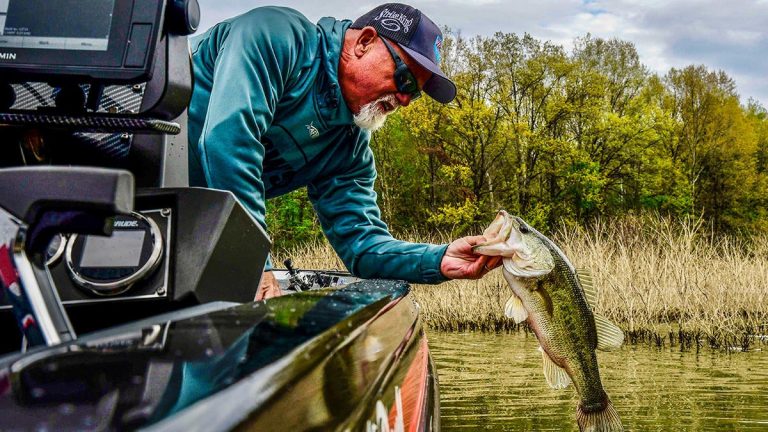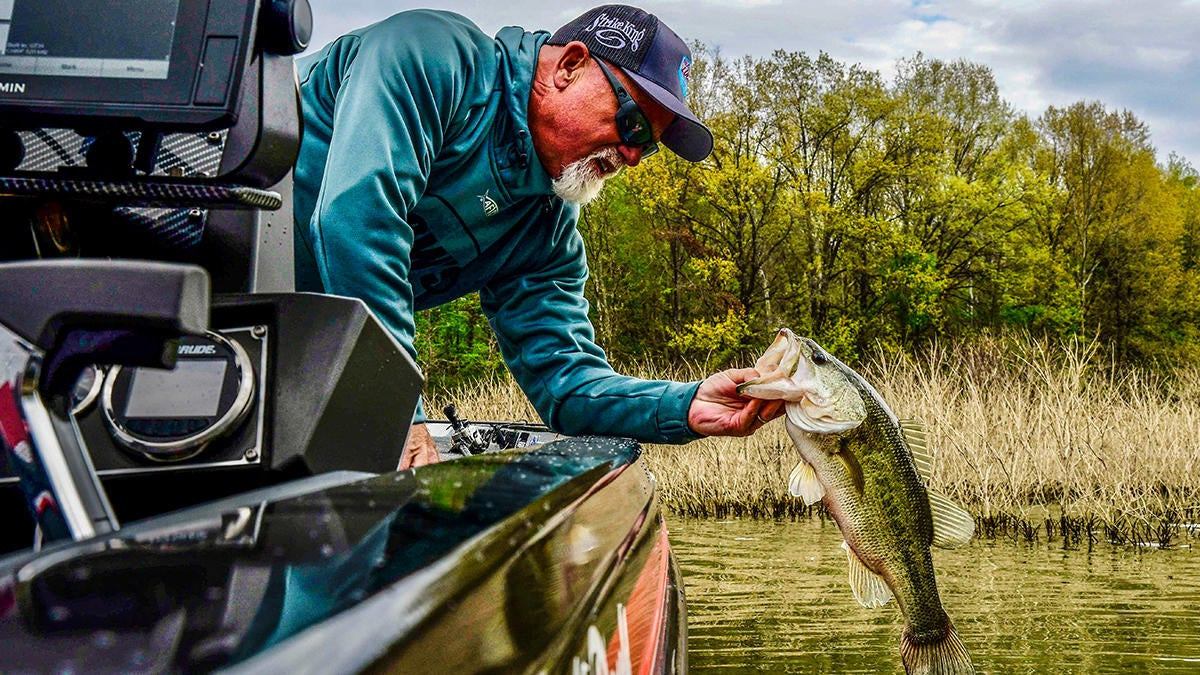I was chatting with my friend and professional angler Bill McDonald last week and he said something to me that I found pretty amazing.
“You know, I’ve had a pretty good year fishing,” McDonald said. “And I honestly would have to guess that 98 percent of my fish catches have been a direct result of finding isolated cover with my Garmin Panoptix. That’s no lie.”
Before our conversation ended, I made sure to schedule a more “formal” interview with him for a few days later. I was too interested by his statement to not discuss it further. I had a couple of days to think about what I wanted to ask him and how I wanted to structure this article. As I was thinking of some questions, I started looking back at my own big-bass catches.
Surely enough, most of mine over the past few years have come from isolated cover as well. So it kind of goes without saying that there has to be something special about this approach. Let’s dive into the proverbial method behind the madness.
What’s the big deal about isolated cover?

As anglers, we’re naturally going to flock to the best-looking and most obvious cover on the lake when we begin our search for big bass. While it’s tempting to get in the thickest cover you can find, more isolated cover can actually pay bigger dividends.
“Everyone finds the obvious stuff,” McDonald said. “Fish definitely figure that out quickly and fishing pressure will cause them to move; I’ve seen it a lot throughout my career. But those special pieces of isolated cover don’t get beat on very much so those fish are a lot more likely to bite.”
McDonald believes isolated cover is even more important in today’s world. Due to COVID-19, a droves of people are fishing throughout the entire week. The result, of course, is a drastic increase in fishing pressure and more skittish bass.
“With the pandemic going on, this is a year like none other in terms of fishing pressure,” McDonald said. “You pull up to a boat ramp and it’s absolutely packed all week long; everybody is fishing. It’s the craziest thing I’ve ever seen. This has really changed the more traditional bites throughout much of the country and I really think it’s because more of them are being hooked. So now, more than ever, it’s important to put the time into finding small, isolated pieces of cover that aren’t being fished.”
We conducted our interview while McDonald was at Sturgeon Bay practicing for the FLW Tackle Warehouse TITLE Presented by Toyota. He was shocked by the amount of fishing pressure throughout his practice.
“Sturgeon Bay is a huge place,” McDonald said. “But yesterday I caught a 5-pound, 6-ounce smallmouth with a hook hole in its mouth. Almost every single fish I’ve caught has holes in their lips.”
In addition to finding and having small sweet spots to yourself, it’s also important to understand the way a big bass thinks. As they age and become larger, they become much more territorial of their space. They don’t want to run around with a bunch of 14-inchers and be forced to out-compete them for food. They want to “own” and piece of cover and be able to feed without constant competition. Isolated cover, whether it’s a single stump, a grass clump or a few rocks, gives big bass that exact opportunity.
Where and how to start searching

Now that we understand the “why” behind this technique, let’s explore the “how”. In the late summer, McDonald prefers to head up-river on most fisheries. While it does fit his fishing style best, he also noted the importance of cooler water temperatures. Sometimes just a few degrees can make an enormous difference. While in the rivers, he looks for isolated cover in two particular types of areas.
“I’m looking for depressions a lot of the time,” McDonald said. “If I can find an area where a ditch meets a creek channel or maybe the last bend in the ditch before it hits the creek channel, I’m going to dissect it looking for something isolated.”
He also urgers anglers to seek out any down-current river bend. Because this is where current-washed cover accumulates, it’s a great place to find a lone log that’s holding a big fish.
As earlier stated, a huge part of McDonald’s approach revolves around his Garmin Panoptix. He has the utmost confidence in his units and has learned them quite well.
“It really has been a huge player for me,” McDonald said. “While you can see the fish in real-time, I prefer to use it to find pieces of cover. It shoots a 20-degree wide angle and a 135-degree wide vertical angle. I can pan the trolling motor and find outer edges of grass, root wads, hidden laydowns, stumps, rock piles… you name it. Instead of running your boat over the cover and spooking fish, you can see it way ahead of time. I shoot my Panoptix 75 to 100 feet in front of the boat.”
Keep your bait selection simple

Once he finds a good-looking area and pinpoints a high-percentage piece of isolated cover with his Garmin units, McDonald keeps his bait selection surprisingly simple. He’ll start off with a moving bait in hopes of maximizing his efficiency, but if there are no takers, he likes to slow it down with a bottom-contact presentation.
“I cannot possibly count the number of fish I’ve caught this year on a 1/2-ounce Strike King Thunder Cricket,” McDonald said. “It is an absolute fish catcher and has turned into a major confidence bait for me. I like to cast it around the isolated cover to begin with because I can actually see the fish react-or not react-to it on my Panoptix. If I don’t get the reaction I’m looking for, I’ll know I need to slow down.”
For a trailer, he prefers either a 3.75 Strike King Rage Swimmer or a Strike King Rage Twin Tail Menace Grub. He finishes out his rig with 15- to 20-pound Seaguar InvizX, a 8.3:1 Lew’s Hyper Mag Speed Spool SLP reel and a Lew’s Custom Speed Stick Magnum casting rod.
“If I need to slow down my presentation, I’ll start pitching a a Strike King Rage Bug. I use a 8.3:1 Lew’s Hyper Mag for it as well with a Lew’s Team Custom Pro Ledge casting rod.
The next time you hit the water and have problems getting bites, spend a little time searching for isolated cover. Not only will you be the only one fishing it, but McDonald believes you could easily run across the mother lode.

















